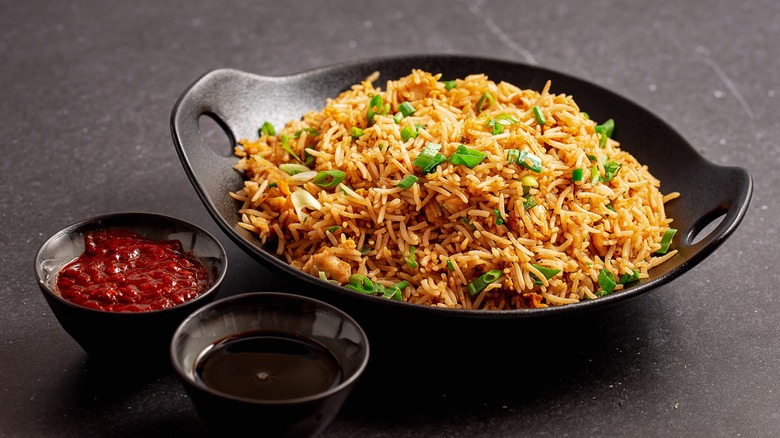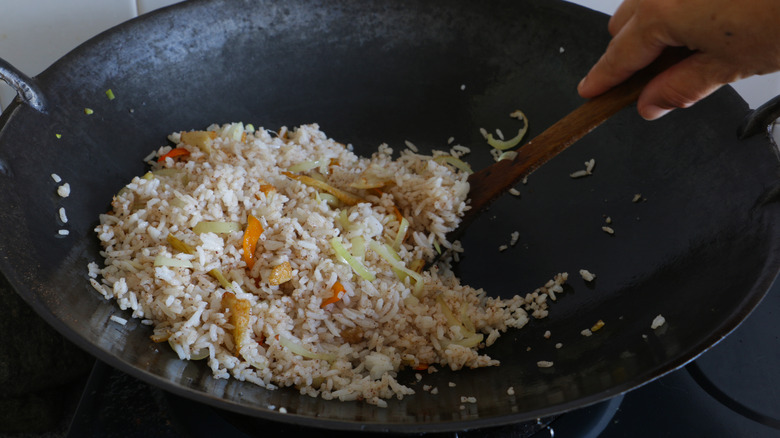Here's Why Cornstarch Is Not Your Answer To Better Fried Rice
Does your homemade fried rice clump together and always taste mushy? While you might think that adding a dash of cornstarch will help to crisp up the grains and keep them distinct as they're tossed in your wok, this move is a nonstarter because it can actually have the opposite effect. We spoke to Brian Griffith, Executive Chef at Choy, who told us, "I do no recommend adding cornstarch to the rice as it will produce a gummy texture and stick in the wok."
One of the main properties of cornstarch is that it swells and softens when combined with liquid, which makes it a superb thickening agent. Add it to a wok along with soy sauce and a dash of sesame oil, and it will gelatinize, thereby creating a gummy coating around your rice. This causes the grains to clump together and also adversely affects their texture, turning them almost tacky and sticky.
Moreover, if the cornstarch sticks to the base of the wok as it gelatinizes, it can create an unwanted film on the surface that's liable to burn. This burnt odor can permeate into your rice, eggs, and veggies, imbuing them with a scorched flavor. Of course, this is the opposite of what you want to achieve when it comes to fried rice. Each grain should be distinct, slightly crispy with some bite to it, and deliciously smoky. This scrumptious consistency is what lends fried rice its satisfying mouthfeel and satiating character.
Chilled day-old rice makes the best fried rice
While it may make theoretical sense to add cornstarch to rice to elicit a crispy texture (after all, it's often employed as a coating to make chicken, tofu, and potatoes develop an extra crunchy crust), it can do the opposite if your rice is damp with moisture. The best way to make restaurant quality fried rice at home is to firstly use cold rice that's preferably been left to chill in the fridge overnight. Chilled rice has a firmer and drier texture than freshly cooked rice, which means it doesn't clump together when fried in a wok. Secondly, it's vital to select an oil with a high smoke point so you can whack up the heat without worrying about burning your oil and creating an acrid smell in your kitchen. And finally, you should always stir-fry your rice on continuous high heat while tossing it regularly to encourage any moisture within the body of each grain to evaporate quickly instead of steam.
Cornstarch still has its place in other Chinese stir-fry dishes, such as soy chicken and broccoli, where its used to make a slurry that thickens the sauce and lends it an appetizing sheen. It also makes a fantastic crispy coating on cubed and seasoned pan-fried tofu or in General Tso's chicken, where chunks of protein are deep fried before they're tossed in a zingy glaze.

